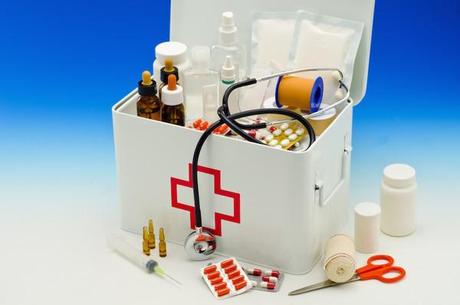
Being prepared to deal with natural disasters and emergency situations is something that most people leave to the proper authorities. And yet, when you need emergency services and government aid the most, these resources may not be available to you. As we saw with Hurricane Katrina, some situations leave thousands of people without access to food, water, and proper medical care. It is therefore in your best interest to behave like a responsible adult and create a contingency plan for such occasions in order to protect yourself and your family. In addition to stocking up on food, water, and other supplies, this means learning basic first aid skills that could come in handy and perhaps even save the life of a loved one. Here are a few medical skills every prepper should learn.
Performing CPR
Cardiopulmonary resuscitation is a procedure that allows you to keep a person's body breathing and pumping blood when it fails to do so of its own accord. This procedure may be needed following incidents like drowning, choking, or electrical shock, just for example. Although it is not a long-term solution, CPR can revive someone who has suffered such an incident, or at least keep their body and brain alive until medical help arrives. CPR is one of the first and most basic life-saving skills that everyone in your household should be trained to perform.
Performing the Heimlich Maneuver
This life-saving procedure is designed to clear someone's windpipe when an object has become lodged in it, cutting off the airway. It involves applying pressure to the abdomen in concentrated thrusts with a closed fist to force the object up and out of the person's mouth, and it can be performed on adults, children, and even on yourself. There are different ways of performing the Heimlich maneuver, depending on the age of the choking victim and whether or not he/she is conscious at the time, so it's best to get proper training to understand how to proceed in any choking scenario.
Stanching Bleeding
All manner of wounds may require your attention in the wake of a disaster or during some kind of emergency situation, from simple scrapes and scratches to gashes that are spurting blood. And there are a variety of ways to treat them, but the first order of business is to stop the bleeding. Applying pressure is the key to stanching blood flow before the victim bleeds out, and first aid kits often include compression bandages, as well as manuals that should explain how to properly treat such wounds and stop the flow of blood. Emergency medical training (such as an EMT course) is also a good option for learning how to act in an emergency situation involving open wounds.
Applying a Tourniquet
In the event of extreme bleeding that cannot be stanched, you may have to apply a tourniquet. This can be dangerous because it virtually stops the flow of blood to a limb. As a result, you must note the time you applied the tourniquet so that it may be loosened temporarily every 20 minutes to prevent tissue damage. But it could stop someone from bleeding out if compression on a wound simply isn't working.
Applying Sutures
Once you have stopped any bleeding, you'll need to know how to properly treat wounds. Cuts and gashes, if they are deep enough, may require stiches (or sutures) to allow for healing and protect against infection. And the process is going to be a little different from stitching up a quilt or clothing. Proper training can help you identify which wounds will likely heal on their own with bandages and tape and which will require suturing.
Immobilizing Broken Bones
Whether your situation demands that you stay put or it requires you to move away from your structure for safety, you need to make sure that broken bones are immobilized. This way, they won’t undergo further damage. Slings or splints are probably your best bet, and learning how and when to use such options should be part of your prepper training.
Recognizing and Treating Shock
There are signs and symptoms you can look for to see if people are in shock, but following trauma, it's usually best to assume that shock will set in at some point. When shock occurs, blood pressure drops, which can cause the person to pass out, but more importantly, it can lead to organ failure. To raise blood pressure, raise the victim's legs (unless other injuries prevent it), loosen tight clothing, and try to increase warmth (to normal body temperature). If the victim has passed out, turn the head sideways to prevent choking. Even in lieu of other injuries, shock can be fatal if left untreated, so make sure you know the symptoms and how to treat them accordingly.
